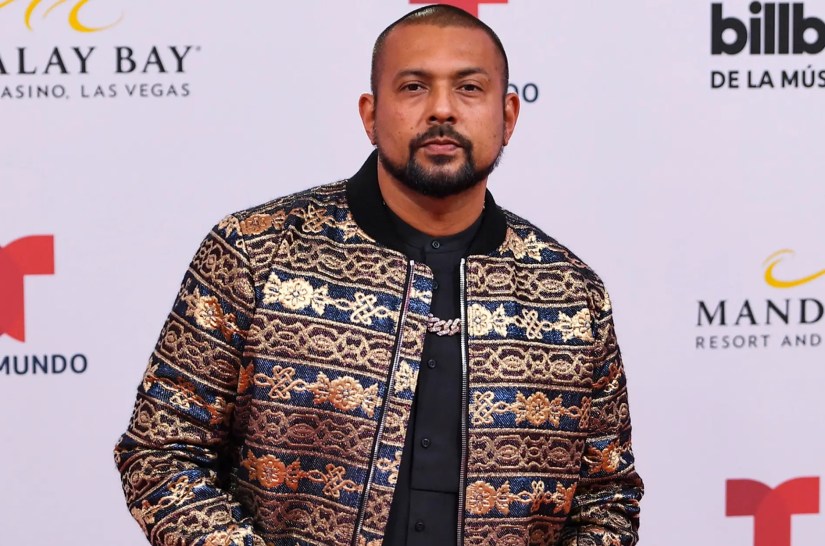Sean Paul Ryan Francis Henriques, known professionally as Sean Paul, was born on January 9, 1973, in Kingston, Jamaica. His multicultural heritage is as vibrant as his music, with a mother of English and Chinese Jamaican descent and a father whose lineage includes Portuguese Jewish ancestry. His upbringing in a family with diverse cultural influences played a significant role in shaping his musical style, which blends elements from various genres to create a unique sound that has resonated with fans around the globe.
From a young age, Paul exhibited a deep connection to music, but his path initially led him towards athletics, following in the footsteps of his family members who were accomplished swimmers. His grandfather was a member of the first Sri Lankan men’s national water polo team, and his father also played water polo for the team in the 1960s, in addition to competing in long-distance swimming. Paul himself was an avid athlete, playing for the national water polo team from the age of 13 to 21.

Despite his athletic prowess, his passion for music eventually won over, and he began to pursue a career in the arts. He attended the prestigious Hillel Academy in Jamaica, which provided him with a well-rounded education and further exposed him to a variety of cultural experiences. His academic journey continued at the College of Arts, Science, and Technology, now known as the University of Technology, where he studied commerce with the intention of pursuing a profession in hotel management.
However, the call of music was too strong to ignore. He started to rap at local bars and clubs, where his talent quickly caught the attention of producer Jeremy Harding. This encounter marked the beginning of a partnership that would launch his career into the stratosphere. Harding became his manager, and together they navigated the early stages of his musical journey, culminating in the release of his debut album “Stage One” in 2000.
However, in the dynamic world of music, few artists manage to remain relevant across decades, but Paul is an exception. The Jamaican dancehall superstar, known for his electrifying beats and catchy lyrics, has made a triumphant return to the music scene. With a career spanning over two decades, he has not only left an indelible mark on the dancehall genre but also on the hearts of music lovers worldwide.
His journey began in the late 1990s, where his unique blend of dancehall and reggae started to gain traction. His breakthrough came with the release of “Get Busy,” a track that soared to the top of the Billboard Hot 100 and introduced the world to his infectious Jamaican rhythms. This was more than just a hit; it was a cultural moment that brought dancehall to the masses.
Sean Paul’s early life was a tapestry of diverse experiences. These formative years laid the foundation for a career that would see him become one of the most influential artists in the dancehall and reggae scenes, known for his ability to infuse his music with the rich cultural heritage that he inherited from his family.
Over the years, he has released a string of successful albums, including “Dutty Rock” and “The Trinity,” which further cemented his status as a dancehall icon. His collaborations with international artists have showcased the versatility of dancehall, influencing genres like reggaetón and Afrobeat. Sean Paul has not just been an artist; he’s been a global ambassador for Jamaican music.
After a brief hiatus, He is back, and his comeback is a testament to his enduring appeal. His latest tour, “The Greatest Tour,” is set to captivate audiences across the United States, starting May 2 at the House of Blues in Orlando, Florida, and concluding on June 16 at the Fillmore in Charlotte, North Carolina. This tour is not just a series of performances; it’s a celebration of a career that has spanned over two decades.
His recent work with reggaetón acts and the release of singles like “Greatest” hint at an artist who is not resting on his laurels but is actively shaping the future of dancehall music. His upcoming songs promise to delve into more conscious themes, reflecting the struggles and beauty of life in Jamaica.
His influence on music is undeniable. From the clubs to the airwaves, his tracks have made people dance and brought joy to many. His comeback is not just a return to the stage; it’s a continuation of a legacy that has made him one of the most significant figures in dancehall music.
As Paul himself says, “I feel that the people are ready for me again.” Indeed, the world is ready to embrace the return of a legend, ready to dance to the rhythm of his beats, and ready to witness the ongoing evolution of a music icon.
This remarkable comeback is a reminder that true talent can withstand the test of time, and his music will continue to inspire and entertain for years to come. Welcome back, Sean Paul, the dancehall legend.

